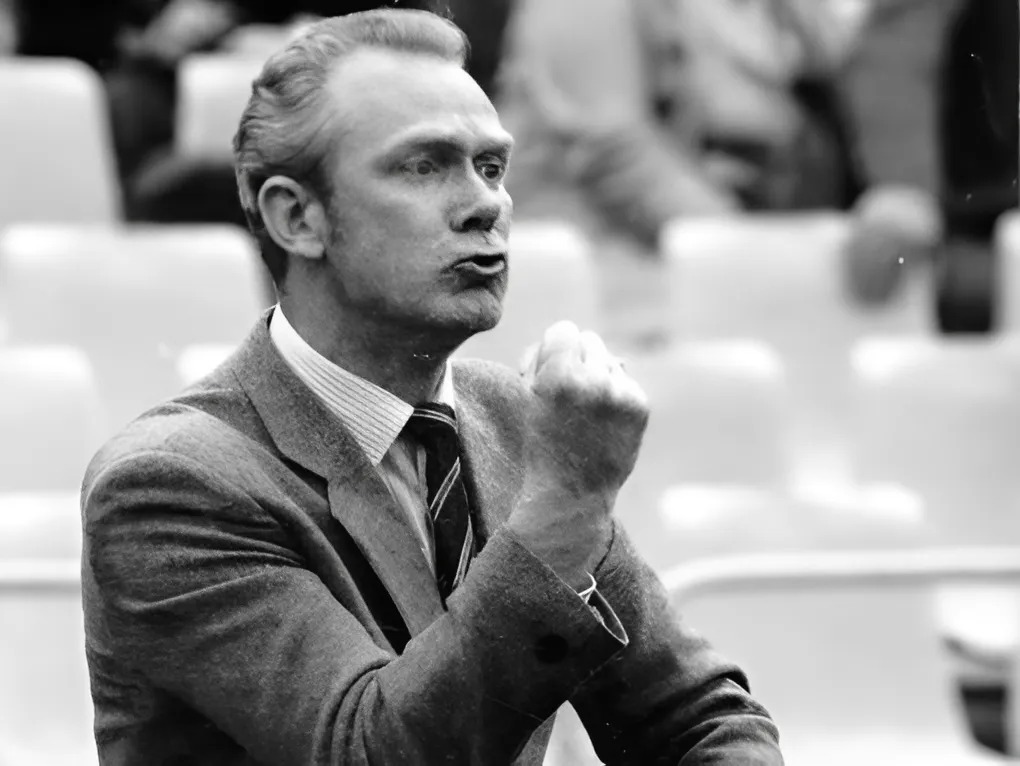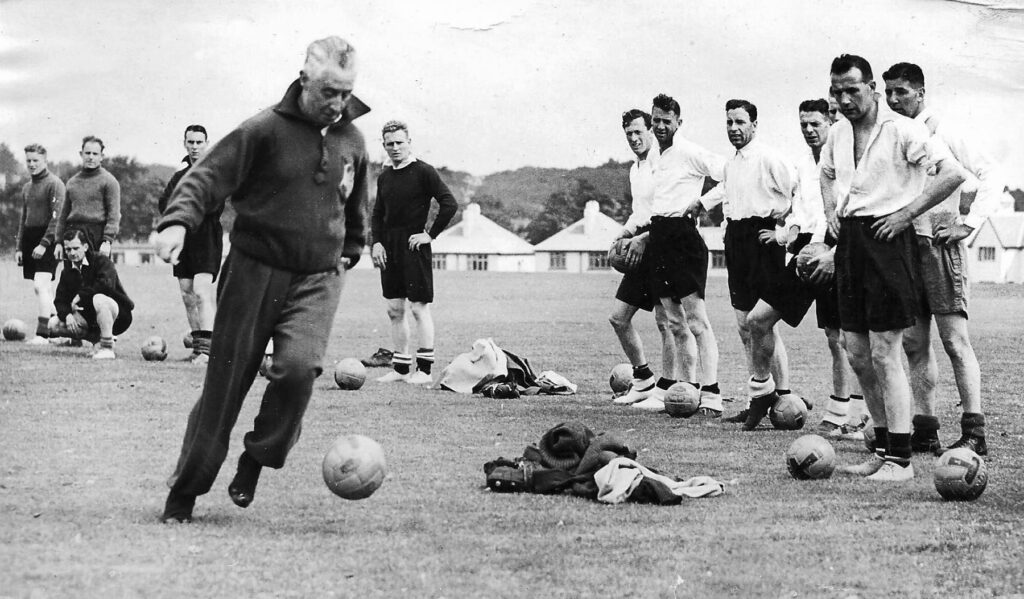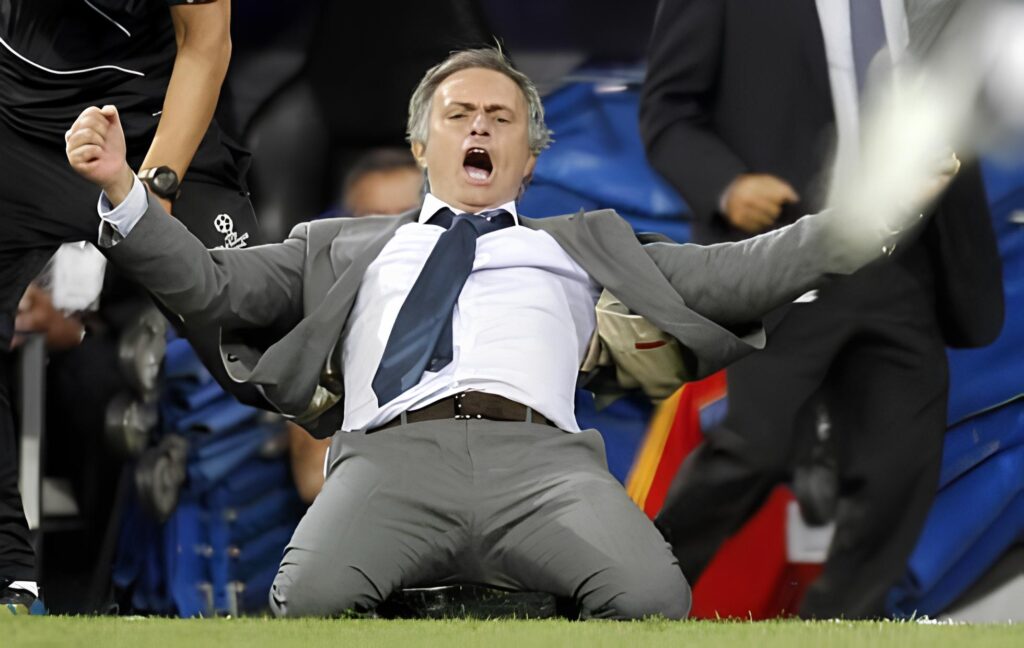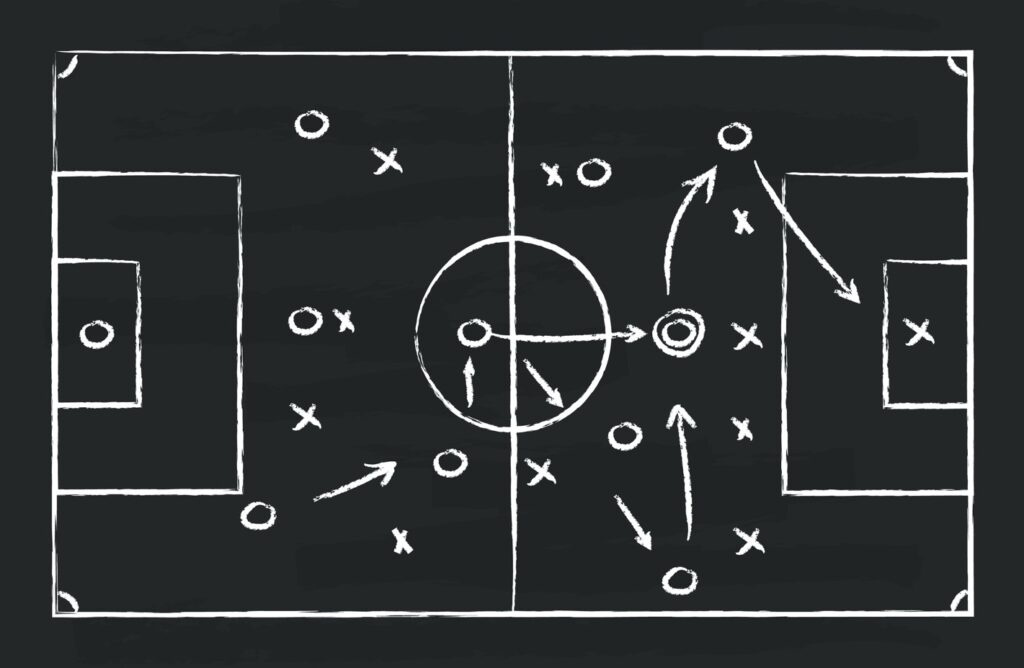Valeri Lobanovskiy, The Tactical Visionary

Valeri Lobanovskiy, The Tactical Visionary Valeri Lobanovskiy: The Tactical Visionary Who Changed Soviet Football He was one of the most influential football managers of the 20th century. He revolutionised the tactical landscape of Soviet and Eastern European football. Known for his systematic approach, Lobanovskiy introduced groundbreaking methods. These methods reshaped the way football was played, particularly with Dynamo Kyiv and the Soviet national team. His commitment to science, fitness, and discipline laid the foundation for the modern tactical evolution we see in football today. https://breakingthelines.com/historical/valeriy-lobanovskyi-footballs-forgotten-pioneer/ Lobanovskiy’s Tactical Philosophy: A Blend of Science and Discipline Lobanovskiy’s football philosophy was built on scientific principles, intense physical conditioning, and tactical intelligence. He was one of the first coaches to integrate sports science into his training methods and believed in the following key principles: Physical Conditioning: Lobanovskiy placed great emphasis on stamina, endurance, and mental resilience. His players were some of the fittest in Europe, capable of maintaining high-intensity play throughout a match. Tactical Discipline: His teams adhered to strict positional play, with each player understanding their role within the system. Every movement was designed to be part of a greater collective effort. Total Team Play: Lobanovskiy’s football was collective rather than individualistic, where each player contributed to both defensive and offensive phases. His formations were highly structured but allowed for fluid transitions between defence and attack. Dynamo Kyiv: The Birth of a Tactical Revolution Lobanovskiy’s greatest achievements came during his time with Dynamo Kyiv. Under his leadership, the team became one of Europe’s most dominant sides, winning multiple Soviet league titles, domestic cups, and two European Cup Winners’ Cups (1975 and 1986). Lobanovskiy’s Dynamo Kyiv was known for its disciplined, high-pressing style and the systematic implementation of tactics: 4-4-2 Formation: Lobanovskiy employed a 4-4-2 formation with well-defined roles for every player. The midfielders worked in tandem, supporting both defensive duties and offensive transitions. High Pressing: His teams played an aggressive, high-pressing game, aiming to win the ball back high up the pitch. This early form of pressing has been credited as a precursor to modern high-press systems employed by teams like Barcelona and Bayern Munich. Speed and Precision: Lobanovskiy emphasised quick, short passes and fast counter-attacks. His team’s ability to transition from defence to attack in an instant was one of their trademarks. Soviet National Team: Tactics on the Global Stage Lobanovskiy’s influence extended beyond club football to the Soviet Union national team, where he introduced similar tactical principles. His tenure with the national team saw: The 1980 European Championship: Under Lobanovskiy, the Soviet Union reached the final of the 1980 European Championship. The team played with a highly structured, disciplined approach, utilising the same high-press and counter-attacking tactics that had served him so well at club level. 1986 World Cup: Lobanovskiy’s tactical influence was evident during the 1986 World Cup, although the Soviet Union was eliminated in the quarter-finals. Nevertheless, his team’s organisation, pressing, and fast transitions left a lasting impression on football analysts worldwide. Key Tactical Innovations of Lobanovskiy Scientific Approach to Training: Lobanovskiy integrated sports science into every aspect of his coaching, from fitness regimes to match preparation. He was one of the first to analyse players’ performances using data, emphasising recovery and physical conditioning to ensure peak performance levels. Compact Defending and Fluid Attacking: His teams maintained a compact defensive shape but were highly fluid in their offensive movements. Lobanovskiy often had his midfielders and forwards interchange positions to create overloads and disrupt opposition defences. Pressing and Collective Defence: Lobanovskiy was a pioneer of the high pressing game. He stressed the importance of team organisation and quick decision-making, with players working collectively to regain possession and launch fast counter-attacks. Dynamo Kyiv’s Tactical Legacy Under Lobanovskiy, Dynamo Kyiv was a footballing powerhouse. His tactical methods not only brought success to the club but also influenced future generations of coaches: European Cup Winners’ Cups: Dynamo’s triumphs in the 1970s and 1980s, especially their 1975 European Cup Winners’ Cup win, demonstrated the effectiveness of Lobanovskiy’s pressing, counter-attacking style on the international stage. Exporting Soviet Football Tactics: The tactical blueprint Lobanovskiy developed in Kyiv was later adopted by many top European managers, including those in the Soviet bloc countries, and influenced coaching ideologies across Europe. The Influence of Lobanovskiy’s Tactics on Modern Football Lobanovskiy’s tactical innovations continue to influence football today. His ability to blend scientific approaches with strict tactical discipline paved the way for the modern game’s emphasis on high pressing, collective team play, and fitness: High Pressing: Lobanovskiy’s early work on pressing from the front has evolved into the modern pressing systems we see in clubs like Liverpool, Bayern Munich, and Manchester City. His vision of regaining possession high up the pitch has become a fundamental aspect of contemporary football. Structured Team Play: The idea that every player must understand their tactical role in the system has been widely adopted by top coaches such as Pep Guardiola, who also emphasises tactical discipline and positional play in his teams. Data-Driven Football: Lobanovskiy was ahead of his time in integrating data and sports science into football. Today, nearly every top club uses analytics and fitness tracking to optimise player performance, a concept Lobanovskiy helped pioneer. Key Players in Lobanovskiy’s System Lobanovskiy’s success was built on the strength of his players, each of whom was vital to the implementation of his tactical vision: Oleg Blokhin: The dynamic forward was one of Lobanovskiy’s most important attacking players. His speed and finishing ability made him a constant threat in Lobanovskiy’s high-pressing system. Valery Lobanovskiy’s Midfield General: Players like Igor Belanov and Yuri Semyonov were crucial in both offensive and defensive phases, ensuring balance in Lobanovskiy’s tactical setup. Oleg Blokhin: As a key defensive midfielder, Shestilov’s role in breaking up opposition attacks and distributing the ball effectively allowed Lobanovskiy’s teams to control the game. Legacy: A Tactical Visionary Valeri Lobanovskiy’s legacy is immeasurable. His methods laid the groundwork for much of modern football’s tactical evolution. This includes the emphasis on pressing, team organisation, and scientific training.
Gusztáv Sebes: The Architect of Hungarian Football’s Golden Age

Gusztáv Sebes: The Architect of Hungarian Football’s Golden Age Gusztáv Sebes: The Architect of Hungarian Football’s Golden Age The hungarian coach is one of the most influential football managers in history, is best remembered for his pivotal role in shaping the tactics of the Hungarian national team during the 1950s. As the mastermind behind the legendary « Mighty Magyars, » Gusztáv Sebes revolutionized football with his innovative strategies. He laid the foundations for modern tactical play. This article explores Sebes’ tactical evolution, his achievements, and the lasting impact of his coaching philosophy. https://www.magicalmagyars.com/sebes.html Sebes’ Tactical Philosophy: The Birth of Modern Football Sebes’ teams played a fluid, fast-moving game that seamlessly integrated attacking and defensive elements. Fluid Attack and Defence: He introduced the concept of players switching positions dynamically, which created unpredictability and overloads in attack. Positional Interchange: Long before it became synonymous with the Netherlands, Sebes was already advocating for a system where players were versatile and could adapt to multiple roles on the pitch. The Rise of the Mighty Magyars Sebes’ most notable achievement came with the Hungarian national team, particularly during the period between 1950 and 1956, when they were known as the Mighty Magyars. This period marked the peak of Hungarian football and saw Sebes implement several groundbreaking tactics. 4-2-4 Formation: Sebes is credited with innovating the 4-2-4 formation, where the two wingers (Puskás and Czibor) played a key role in creating width, while the central forwards (Kocsis and Puskás) formed a formidable strike partnership. Key Achievements: Under Sebes, Hungary went unbeaten for 32 matches and defeated England 6-3 at Wembley in 1953, a result that stunned the football world. The 1954 World Cup: Although Hungary lost in the final, Sebes’ tactical setup revolutionised football with an emphasis on possession-based play and quick transitions. Key Tactical Innovations of Sebes Sebes’ impact on football tactics cannot be overstated. His key innovations included: Dynamic Midfield Play: Sebes favoured a flexible midfield, with players like József Bozsik operating as deep-lying playmakers, controlling the tempo and directing attacks from midfield. Versatility of Forwards: Sebes allowed forwards to drop deeper into midfield, creating overloads and enabling a more fluid attacking play, which confused opposing defences. High Pressing and Fluid Movement: His teams employed a form of pressing that sought to win the ball high up the pitch, putting immense pressure on the opposition and dictating the pace of the game. Hungary’s Legacy Under Sebes Under Sebes, Hungary was not only the dominant force in European football but also influenced the global footballing landscape. His tactical approach laid the groundwork for future generations of teams and managers. 1953 Wembley Victory: The 6-3 win over England at Wembley is considered one of the most iconic matches in football history, showcasing Sebes’ tactical genius. The match highlighted Hungary’s mastery of ball movement, positional play, and offensive transitions. 1954 World Cup: Although they ultimately lost in the final to West Germany, Sebes’ Hungary had already set a new standard for football. His approach of flexible, attacking football with a strong emphasis on technique influenced future generations of football coaches worldwide. The Influence of Sebes’ Tactics on Modern Football Sebes’ tactical approach was a precursor to the principles of Total Football popularised by the Netherlands and later adopted by teams like Barcelona and Bayern Munich. His belief in: Positional Fluidity: Players shifting roles according to the demands of the match was one of Sebes’ most enduring legacies. Ball Possession and Quick Transitions: His emphasis on holding onto the ball and transitioning quickly from defence to attack laid the foundation for modern possession-based football. Key Players in Sebes’ System Sebes built his teams around a core of talented and versatile players, who were key to executing his tactical vision: Ferenc Puskás: As the captain and star forward, Puskás was a central figure in Sebes’ system, contributing both as a goalscorer and as a playmaker. József Bozsik: The deep-lying playmaker, Bozsik’s intelligence in midfield was crucial to Sebes’ possession game. Sándor Kocsis: Kocsis’ aerial ability and knack for scoring goals made him the perfect foil to Puskás in attack. Zoltán Czibor: A winger with pace and skill, Czibor was pivotal in stretching the opposition and providing crosses into the box. Sebes’ Legacy: Shaping the Future of Football Sebes’ contributions to football tactics were groundbreaking. His ability to blend defensive organisation with fluid attacking play created a footballing philosophy that would influence future generations. While he may not have won as many trophies as some of his contemporaries, his influence on the development of modern football is undeniable. Homepage
José Mourinho’s Tactical Masterclass

José Mourinho’s Tactical Masterclass José Mourinho’s Tactical Masterclass: The Evolution of a Football Genius Few managers in the history of football have influenced the game as profoundly as José Mourinho. Known as The Special One, Mourinho’s career has been defined by his ability to adapt, innovate, and impose his tactical philosophy on every team he has managed. This article delves into Mourinho’s tactical evolution and explores how his strategies have left an indelible mark on football. https://www.marca.com/2012/09/18/futbol/equipos/real_madrid/1348003073.html Mourinho’s Tactical Philosophy: The Foundations At the heart of Mourinho’s tactical philosophy lies an unyielding emphasis on organisation, discipline, and pragmatism. His approach is rooted in: Defensive Solidity: Mourinho prioritises a well-structured defence, often utilising a compact block to deny space to opponents. Counter-Attacking Efficiency: Quick transitions from defence to attack are a hallmark of his teams, exploiting opposition weaknesses in moments of disorganisation. Adaptability: Mourinho tailors his strategies to each opponent, making his teams unpredictable and highly effective. First José Mourinho’s Tactical Masterclass, the Porto Era: The Rise of ‘The Special One’ Mourinho’s breakthrough came with FC Porto, where he implemented a 4-3-1-2 formation that emphasised defensive robustness and swift counter-attacks. Key achievements included: UEFA Champions League 2003/04: Porto’s remarkable victory showcased Mourinho’s tactical acumen, as his team outmanoeuvred Europe’s giants with clinical efficiency. Key Players: Deco served as the creative fulcrum, while the defensive duo of Ricardo Carvalho and Jorge Costa provided solidity. Chelsea: Pragmatism Meets Premier League Dominance Mourinho’s first stint at Chelsea (2004–2007) established him as a global icon. He favoured a 4-3-3 formation with: A Solid Defensive Core: John Terry, Ricardo Carvalho, and Petr Čech formed a near-impenetrable backline. Dynamic Midfield Play: Frank Lampard and Claude Makélélé excelled in their respective roles, with Makélélé mastering the defensive midfield position. Adaptable Offence: Didier Drogba spearheaded the attack, excelling in both physical duels and hold-up play. During this period, Mourinho led Chelsea to back-to-back Premier League titles, breaking numerous defensive records. Inter Milan: Mastering Counter-Attacking Football Mourinho’s tenure at Inter Milan (2008–2010) is often regarded as his tactical zenith. Using a compact 4-2-3-1 formation, he guided Inter to a historic treble in 2010. Defensive Discipline: Players like Walter Samuel and Lucio embodied Mourinho’s philosophy of defensive sacrifice. Key Tactical Masterpiece: The Champions League semi-final against Barcelona saw Inter play a near-perfect defensive game, nullifying Pep Guardiola’s attacking juggernaut. Attacking Stars: Wesley Sneijder’s creativity and Diego Milito’s clinical finishing were instrumental. Real Madrid: Blending Strategy with Star Power At Real Madrid (2010–2013), Mourinho faced the challenge of managing a team of global superstars while maintaining his tactical principles. Emphasis on Speed: Mourinho’s Real Madrid became synonymous with devastating counter-attacks, often involving Cristiano Ronaldo, Ángel Di María, and Mesut Özil. Breaking Records: The 2011/12 team scored a record-breaking 121 goals in La Liga, showcasing a more attacking side to Mourinho’s tactics. Clashes with Guardiola: His rivalry with Barcelona’s Pep Guardiola defined this era, with Mourinho often employing physical and disruptive tactics to counter Barça’s tiki-taka. Return to Chelsea and Manchester United: Tactical Adaptability Mourinho’s second spell at Chelsea (2013–2015) and his tenure at Manchester United (2016–2018) demonstrated his ability to evolve: Chelsea: He implemented a balanced 4-2-3-1 system, winning the Premier League in 2014/15. United: At Manchester United, Mourinho adapted his tactics to a team in transition, winning the Europa League and EFL Cup in 2017. Despite criticism for perceived defensive approaches, Mourinho remained steadfast in his belief that winning is paramount. AS Roma: Reinventing Himself in Italian Football At AS Roma (2021–present), Mourinho has re-embraced his Italian roots, focusing on defensive solidity and building a cohesive unit. Formation Flexibility: Shifting between 3-4-2-1 and 4-2-3-1, Mourinho has tailored his approach to Roma’s squad. Success with Limited Resources: Leading Roma to their first-ever UEFA Europa Conference League title in 2022 highlights his ability to achieve results, even with less-fancied teams. Defensive Organisation: The Mourinho Blueprint Across all his teams, Mourinho’s defensive strategies have been a defining characteristic. His emphasis on compactness, communication, and positional awareness ensures his teams are difficult to break down. Key Players in Mourinho’s System Mourinho has always built his teams around specific profiles: Creative Playmakers: Deco, Sneijder, Özil. Physical Strikers: Drogba, Milito, Lukaku. Defensive Anchors: Makélélé, Cambiasso, Kante. Legacy and Impact on Modern Football José Mourinho’s tactical innovations have influenced generations of managers. His approach has proven that adaptability and pragmatism can rival any attacking philosophy. While often criticised for prioritising results over aesthetics, his ability to win in various leagues and competitions cements his place as one of the greatest managers in football history. Homepage
The Emergence of Tactics in Football

The Emergence of Tactics in Football The Emergence of Tactics in Football: A Game-Changing Evolution Football, often referred to as « the beautiful game, » was once viewed as a display of individual skill and raw talent. However, as the sport evolved and its demands grew, tactics emerged as a cornerstone, transforming football into a sophisticated chess match on grass. This article explores the emergence of tactics in football and their impact on the modern game. This black-and-white illustration depicts a tactical football dashboard. It features a detailed pitch diagram with player positions marked as circles, arrows indicating movements, and side panels displaying data such as ball possession, passing accuracy, and heat maps. Ideal for tactical analysis or football coaching content. What Are Tactics in Football? Tactics refer to the collective organisation of players on the pitch to maximise their chances of winning. They include elements such as: Formations (e.g., 4-4-2, 3-5-2, 4-3-3), Defensive strategies (man-to-man marking, high pressing), Offensive patterns (counter-attacks, structured attacks), Game pace management. The aim is to harness a team’s strengths while exploiting the weaknesses of the opposition. The Early Days of Tactics: A Structured Game In its infancy, football resembled a chaotic scrum, with most players clustering around the ball. It wasn’t until the late 19th century that teams began to structure their play with the introduction of early formations like the famous 2-3-5, which prioritised attack and sought to maximise goal-scoring opportunities. The 20th Century Evolution: From Physicality to Collective Intelligence As rules evolved and visionary coaches emerged, football underwent a dramatic transformation. Key milestones include: The Swiss Verrou (1930s): Karl Rappan popularised a defensive approach by introducing a sweeper to support the backline. Italian Catenaccio (1950s-60s): An evolution of the Verrou, this ultra-defensive system, associated with Helenio Herrera, focused on defensive solidity and lightning-fast counter-attacks. Total Football (1970s): Revolutionised by Ajax Amsterdam and the Dutch national team, this style emphasised positional interchangeability, requiring versatile players and fluid team play. Modern Football: The Era of Fine Margins Today, tactics dominate football. Managers like Pep Guardiola, Jürgen Klopp, and Diego Simeone are celebrated for their ability to adapt systems to specific matches. Modern innovations include: High-intensity pressing: Forcing opponents into mistakes. Transition management: Quick reactions after winning or losing possession. Video analysis: Studying intricate game details to optimise performance. The Impact of Tactics on the Game A More Strategic Sport: Teams must balance attacking and defensive priorities to remain competitive. The Rise of Specific Roles: Positions like the « false nine » or attacking full-back have emerged to meet tactical needs. Changing Expectations for Players: Modern footballers must not only possess talent but also be tactically astute. Homepage

